Oberlin Alumni Magazine
Fall 2011
[The Oberlin Project]
What do we stand for now?
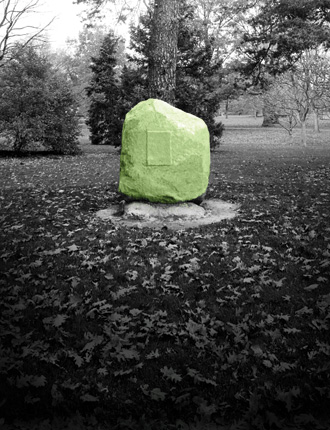 (photo by Kristina Deckert)
(photo by Kristina Deckert)
Historian Geoffrey Blodgett once captured the ethos of oberlin in three words: "stubborn moral idealism." That legacy is evident, notably, in Oberlin’s leadership in race-blind admissions and coeducation. In the 21st century, moral issues will be far more daunting and difficult than ever before, but mendacity, confusion, evasion, and paralysis are rampant in high places.
In these circumstances how does our legacy inform our future? Will the college once again be in the forefront of leadership in higher education on humanity’s two greatest challenges? The first is the preservation of a habitable planet —the sine qua non for all other moral, political, economic, and social issues. The second is the establishment of a fair, decent, resilient, prosperous, and durable global society. What does leadership on these issues mean for college curriculum, management, operations, and finances?
In the summer of 2009, the college reconceptualized and joined four otherwise disparate objectives (described in greater detail below) as an overarching initiative, the Oberlin Project. In affiliation with the city, we aim to revitalize the local economy, eliminate carbon emissions, restore local agriculture and forestry, and use the entire effort as an educational laboratory relevant to virtually every discipline. The era of cheap fossil fuels is over. The era of rapid climate change is upon us. We live in an economically challenged region. Given those three facts, there is no question that we should do such things. However, there is a question of how we should go about doing them. We can be reactionary and do them as a series of disjointed, one-off, overly expensive ad hoc responses to external crises, supply interruptions, and volatile prices. Or we can envision and create an integrated, well-thought-out system in which the parts reinforce the resilience and prosperity of the entire region. The latter choice is the Oberlin Project.
The specific responsibilities of the college in the project are those primarily of providing the leadership required to conceptualize and launch the effort, rebuilding the Green Arts District as one of the primary economic engines for the downtown economy, and eliminating its own carbon emissions — a goal to which it is committed as an early signatory to the Presidents’ Climate Commitment (2006) and as one of 19 members of the Clinton Climate Initiative (2010). The larger effort will be driven by partnerships between the city, the college, private investors, local corporations, and regional development agencies. It will be funded in the decade ahead by a combination of private investment, state funding, new market tax credits, federal support, philanthropy, and savings from increased efficiency in the use of energy, materials, and water.
We have a useful model for the Oberlin Project in the creation of the Adam Joseph Lewis Center. Begun in 1995, we aimed to build the first substantially green building in higher education as the home for the Environmental Studies Program. The goals for the 250 participating students and the 20 members of a remarkable design group were to join all the parts of the building (materials, energy use, water, and landscape) into a model of integrated design and a laboratory for education and research in a one-acre microcosm, and in the process "cause no ugliness in the world, human or ecological, somewhere else or at some later time." We intended to make not just places where education happened, but a place that taught by design, operations, and by the way it evolved over time. We could have aimed lower, conformed to conventional wisdom, built cheaply, avoided risk, and said nothing of importance to our students and to the wider world. But we chose to do otherwise.
Sixteen years later the Lewis Center is widely acknowledged as the best environmental studies facility in higher education and home to the best environmental studies program anywhere. Among other awards, it has been acknowledged as "one of 30 milestone buildings in the 20th century" by the U.S. Department of Energy, and in a 2010 survey published in the AIA magazine, Architect, as "the most important green building of the last 30 years." The Lewis Center was funded by donors otherwise "unlikely to give to the college."
The collateral benefits of the Lewis Center included increased student yields, national and international recognition, an enhanced reputation for leadership, a larger pool of donors, and the creation of an unprecedented laboratory in ecological problem solving for students and faculty alike. It opened the way for higher campus building standards later manifest in the Kohl and Kahn buildings. It also showed that in a larger perspective the right thing to do is often the smartest thing to do and that a policy that is reflexively averse to risk can sometimes avert opportunity as well.
With that example as background, what would it mean for Oberlin once again to step forward and how would that actually transform the college and the city?
Imagine Oberlin in the year 2025 with a vibrant 24 / 7 downtown featuring local foods, arts, and music, powered by energy efficiency and sunlight. Imagine arriving from Hopkins airport on a light-rail coming through a 20,000 acre greenbelt of farms and forests that terminates close to a new, deep green hotel with a cuisine featuring local foods. Imagine your reunion in 2025 held in an adjacent solar powered conference center. Imagine a Green Arts District in which great college strengths in music, the arts, and drama are joined to those in the sciences as the backdrop for performances, exhibitions, lectures, and an ongoing conversation on the most important issues on the human agenda, all having to do with whether and how civilization might endure and flourish in radically altered biophysical conditions.
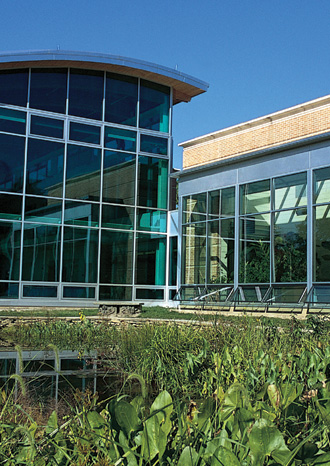
Look deeper and you’ll discover an economy designed for the future, with thriving local businesses that sustainably provide renewable energy, foods, materials, and services; a city with the lowest unemployment and poverty rates of any mid-western city; a college curriculum founded on the thoroughly liberal belief that no student in any field should graduate without knowing how the Earth works as a physical system and why that is important for their lives and careers.
Imagine Oberlin as a perennial front-runner in national rankings and media headlines, celebrated for its role as the anchor institution that led in the effort to create a model of post-cheap-fossil-fuel prosperity, economic resilience, and "full-spectrum sustainability" that integrates education, agriculture, renewable energy, economic revitalization, green building, policy and law, and community development into a system in which each of the parts reinforces the resilience of the larger region. Imagine a college and city collaborating to launch a renaissance of possibilities in a world running short of applied hope.
That vision grows from Oberlin College’s historic commitment to calibrate its educational and institutional priorities to advance human dignity, social justice, and equal access for all. In the 1830s, the college began to grow into its historic commitment to fairness and human decency. Over time it became clear that this was not first and foremost a financial issue, but a moral one. The majority of the founders of this institution saw what many others did not or would not see. They were courageous in a time of moral confusion and political evasion, and we have lived on that moral capital ever since.
Where Are We Now?
Despite great national progress in areas of racial and gender equality, issues of justice are becoming more complicated and portentous than anyone could have imagined in 1833. We’ve entered what the editors of the New York Times and The Economist have called the "Anthropocene," an age when the actions of seven billion humans have become, for better or worse, the dominant force changing the Earth. The most important fact in that transition is the permanent and global effects of burning fossil fuels. We are not just warming the Earth, but progressively destabilizing virtually everything on the planet. One result, of many, is that people — disproportionally the poor and women — are now dying because of droughts, more intense storms, heat, and rising seas caused by rapid climate change — unprecedented ecological changes that will threaten food supply, water, and human health and thereby social cohesion, prosperity, and political stability. The World Health Organization has put the number of annual deaths related to global warming at 150,000 and predicts that the number will double by 2030. In addition, estimates of numbers of people who will become "climate refugees" range upwards of 250 million by 2050. Such things are not distant possibilities, but presaged in daily headlines. So far this year — in the United States alone — we have experienced record heat and drought from Arizona to Florida, unprecedented floods in the Mississippi Valley, larger wildfires in Arizona and Texas than any in recorded memory, and swarms of tornadoes across the South unequaled in numbers and destruction.
At the founding of Oberlin, the big issues on the nation’s agenda had to do with justice, human dignity, and fairness. They will remain foremost in the 21st century, but are now magnified many times over by planetary destabilization. But for most people that reality is an abstraction until its effects are experienced directly as personal suffering and loss.
An Oberlin Response
One difference between the issues of justice at our founding and those ahead has to do with the longevity and complexity of the problem. Carbon dioxide (CO2) from the combustion of fossil fuels will stay in the atmosphere for thousands of years and so cast a long and deepening shadow over all future generations and over the entire web of life on which they will depend. We are now in the rapids of human history. The Oberlin Project is an effort by the city and college to create an integrated response to these challenges. It is an umbrella term that includes six concrete and very practical goals:
[ 1 ] Develop a 13-acre Green Arts District at the U.S. Green Building Council Platinum level as a driver for community economic revitalization. The district will include restoration of the Allen Memorial Art Museum (completed) and Hall Auditorium along with a new hotel and restaurant, business complex, and, possibly, a culinary school, jazz club, conference center, and center for innovation and ecological design. The major goals in the redevelopment of the district are to create local employment, income growth, and community development as well as to construct a streetscape that will serve as an exciting gateway to the downtown and to the college. In the process, we will set a new benchmark for community-scale green development;
[ 2 ] Create new business ventures in energy efficiency and solar deployment, food and agriculture, and the sustainable use of local resources. In the transition to carbon-neutral sustainability, we propose a transformation of the local economy that involves creating and expanding locally owned businesses, fostering a prosperous downtown economy, and encouraging widespread ownership of new enterprises to spread wealth throughout the city while increasing our economic and financial resilience;
[ 3 ] Shift the city and college to renewable energy sources, radically improve efficiency, sharply reduce our carbon emissions, and improve our economy in the process. We presently spend roughly $15 million each year on electricity and natural gas—twice as much as we would need to spend if we were as efficient as is now economically advantageous and technologically feasible. We propose to reduce energy use by improving efficiency (saving millions of dollars), building a local renewable-energy economy that creates jobs and ownership, and growing the local economy while buffering Oberlin from rising energy prices and sudden cost spikes;
[ 4 ] Establish a 20,000-acre greenbelt and develop a robust local foods economy the local farm economy, create new employment opportunities in farming (including summer jobs for teens) and food processing, while improving the taste and nutritional quality of food we eat;
[ 5 ] Create an educational alliance between the college, the Oberlin schools, Lorain County Joint Vocational School, and Lorain County Community College focused on education appropriate to issues of sustainability. The transition to sustainability and a more resilient economy poses large challenges to educators at all levels. What does the rising generation need to know to live well and purposefully in the decades ahead? How should they learn to think in terms of systems and interrelatedness and extend their time horizon? Such questions are pertinent to education at all levels and all educational institutions. In the search for answers and educational methods appropriate to our challenges, we intend to help teachers and faculty members break out of the proverbial silos within educational institutions and help institutions cooperate to transcend those that separate different kinds of educational institutions;
[ 6 ] Replicate the project at varying scales and in different regions through a national network of diverse communities and organizations (The National Sustainable Communities Coalition) with similar goals. To this goal we are collaborating with other projects and communities across the United States that are taking a similar approach by integrating food, agriculture, energy, sustainable economic development, education, public policy, community engagement, health, and transportation.
Our intention is to integrate these goals in a way that each of the parts reinforces the prosperity, resilience, and health of the larger community. To that end we have organized the community into working teams including economic development, education, energy, policy, agriculture, community, and data collection and analysis.
Education
The Oberlin Project represents both an educational challenge and an opportunity. It is a challenge for faculty, administrators, and trustees to understand how the Earth works as a physical system and the connections between the biosphere and college curriculum, operations, and finances and to recalibrate things accordingly. Can an institution that purports to advance learning itself learn in relation to rapidly changing biospheric, climatic, economic, political, and social conditions?
On the other hand, the project is an opportunity to join the theoretical and practical sides of learning — head, hands, and hearts — in the remaking and revitalization of Oberlin in a different era. No department or discipline need be outside this effort. The goal of building a sustainable, inclusive, and fair economy, for example, is an opportunity to test and perhaps rethink basic assumptions of economics, business management, and investment for the long term relative to environmental and human health. The collaboration of city and college is a case study in applied politics, public policy, and leadership in a small town. The need for data collection, analysis, and feedback will require collaboration among several disciplines and will include tracking biophysical flows (such as nitrogen and carbon), economic data (investment and income), and public attitudes and knowledge, and developing real-time feedback systems to enhance learning and improve management decisions at all levels. Teaching the capacity for foresight and the skills of systems analysis involves all of the sciences, social sciences, and humanities. The transformation of city government and college administration is a case study in organizational theory. The need to understand community values and opinions, as well as improve leadership throughout the community, poses important issues for sociology and psychology. Documenting and analyzing the transformation now underway is an opportunity for Oberlin writers, artists, bloggers, and filmmakers. The larger background conditions of global population growth, species loss, conflict, and poverty concern regional studies, politics, and world history. The awareness that things don’t always work out as we might wish is the stuff of literature, philosophy, and classics leading to a deeper understanding of what Spanish philosopher Miguel Unamuno once called "the tragic sense of life." Rebuilding local soils and forests for the greenbelt is ecology, biology, and chemistry. The shift away from reliance on fossil energy to improved efficiency and renewable energy includes physics, ecology, economics, and the psychology of energy users. Consideration of how we might pay for sustainability is in the realm of finance and economics. Design and construction of buildings and facilities in the Green Arts District is art, architecture, and engineering. And the collaboration of the sciences and the arts in the new venue of the Green Arts District is a challenge to our creativity and capacity to reach across disciplines to cultivate a deeper dialogue about the largest issues humans have ever faced.
The Oberlin Project represents an opportunity to enliven curriculum, develop courses and research that transcend disciplines, and build tangible connections to the big issues of the 21st century but at a scale that is comprehensible while being large enough to be important beyond Oberlin. It is an opportunity to bridge the chasm between ideas and practical application and to engage students in solving practical problems and raise their sights to a farther horizon.
So, what is the Oberlin Project? It is, in fact, many things depending on one’s vantage point.
- To prospective students it will mean a college with an unprecedented commitment to the most pressing issues of our times;
- To current students it will mean a vibrant and exciting downtown and an educational laboratory;
- To the faculty it will mean better facilities; and
- unparalleled opportunities to engage students in a broad array of issues that pertain to virtually every department and discipline;
- To Oberlin merchants it will mean a more prosperous downtown economy;
- For Oberlin citizens it will mean increased opportunities for good work in a healthier community with more physical activity, wholesome food, cleaner air and water, and fewer toxic chemicals;
- To Senator Sherrod Brown and Representative Marcy Kaptur it will be a model of sustainable economic development applicable throughout Ohio;
- To the Clinton Climate Initiative it will be an early example of urban prosperity without fossil fuels;
- To architects, engineers, and designers it will be the first significant model of integrated design in the United States;
- To those concerned about security, broadly defined, it will be a community-scale model of resilience that reduces vulnerability to outside disruption whether from malice, technological accidents, or rapid climate change; and
- For future citizens of Oberlin and the wider Oberlin family the fact that this small community once again stood up when it counted will be a source of pride.
The Oberlin Project is, of course, all of these things. But most important, it is a renewed commitment to make the world more fair and decent while preserving a beautiful and livable Earth. And if we don’t stand for such things, what do we stand for?
What Has Been Done So Far:
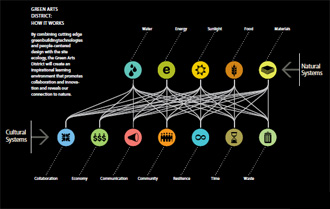 (graphic by BNIM)
(graphic by BNIM)
How far have we come?
Since the launch in the summer of 2009, we have:
- Raised $9 million in grants, gifts, and commitments from 14 foundations and individual donors;
- Organized the community into 10 teams working such issues as energy, education, policy, civic engagement, economic development;
- Established a Friends of the Oberlin Project group with a goal of raising more than $1 million over the next five years;
- Pursued a power purchase agreement to deploy 2 MW of solar electricity;
- Organized a faculty team to track economic, social, and physical data and provide community-scale, real-time feedback with Lucid Design, Inc. (a company founded by Oberlin students and faculty);
- Completed a $1.1 million Department of Energy-funded study on the regional transition to energy efficiency and renewable energy;
- Established a downtown office in the East College Street complex—a $17 million LEED-gold facility created by three Oberlin alumni;
- Hired a managing director, Bryan Stubbs, who has assumed responsibility for day-to-day management of the project, including integration of the 10 community teams;
- Created a website and larger communications strategy for the project.
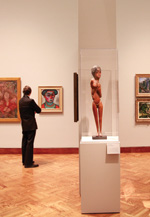
Allen Memorial Art Museum
In addition, the college has completed a $12 million LEED-gold renovation of the Allen Memorial Art Museum, which anchors the northwest corner of the Green Arts District.
The city, in turn, has adopted an energy plan that will eliminate 85 percent of utility carbon emissions from electrical generation by 2014 along with a partnership with the Vermont Energy Investment Corporation to improve energy efficiency throughout the community. The city has also recently completed an initial Climate Action Plan that predicts city-wide reductions of carbon emissions of 50 percent or more by 2015. The Oberlin City School District has authorized BNIM Architects to draft a conceptual study for a new, green, consolidated public school building north of the Green Arts District. The Oberlin Public Library is currently working on improvements to lighting and heating systems that will reduce its energy consumption and carbon footprint.
What's Next
Among our goals for the next 12 months are to:
- Complete the site plan for the Green Arts District;
- Meet a $5 million challenge gift toward a new hotel at the LEED-platinum level;
- Complete a land assessment for greenbelt planning and a regional food plan;
- Develop a series of short films documenting the project;
- Launch several new businesses;
- Create a new standard for assessing progress toward sustainability that incorporates physical, economic, and social data into easily understood metrics and graphic form for community-wide feedback;
- Complete a community-wide educational plan across four institutional partners that prepares young people to meet the challenges and opportunities ahead;
- Develop a special issue of the journal Solutions on the Oberlin Project for fall 2012;
- Complete an economic development plan with a community development bank and a business incubator; and
- Complete a comprehensive community outreach strategy including broad community and student involvement in the project.
Suggested Reading
Stephen Gardener, A Perfect Moral Storm: The Ethical Tragedy of
Climate Change. New York: Oxford University Press, 2011.
The National Research Council, America’s Climate Choices.
Washington, DC: National Academy of Science Press, 2011.
Naomi Oreskes and Erik Conway, Merchants of Doubt.
New York: Bloomsbury, 2010.
David W. Orr, Down to the Wire: Confronting Climate Collapse,
Oxford University Press, 2009.
David Orr, John Petersen, Cindy Frantz, and Rumi Shamin (eds),
Special Issue of Solutions, "The Oberlin Project" (forthcoming, 2012).
Aaron Wildavsky, Leadership in a Small Town, New Brunswick:
Transaction Press, 1964/2004.
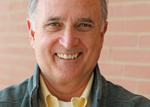
(photo by John Seyfried)
Professor David W. Orr is the author of seven books and the recipient of seven honorary degrees. His many awards include the Millennium Leadership award from Global Green, the Bioneers award, the National Wildlife Federation Leadership award, and a Lyndhurst Prize acknowledging "persons of exceptional moral character, vision, and energy." When not working on the Oberlin Project, Orr enjoys spending time with his four grandchildren.
Academic Leadership for
the 21st Century
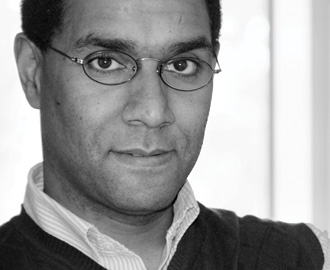 Sean Decatur
Sean Decatur Dean of Arts & Sciences, professor of chemistry
(photo by Scott Goldsmith)
Oberlin’s truly historic decision to admit African American students in 1835 laid the groundwork for a profound revolution in education. More than 120 years before Brown v. Board of Education, before Kenneth Clark and his groundbreaking "doll" experiment, before the concept of "multiculturalism" entered into the American lexicon, Oberlin College made the bold statement that education of blacks and whites, together in the same institution, was indeed better education for all. This is why we all learned about the Oberlin experiment in our high school history books. This concept was so ahead of its time that it was still highly contested before the Supreme Court in the 2003 University of Michigan affirmative action cases (led by our very own President Marvin Krislov).
With our record as my reference point, I entered the Oberlin Project conversation as a skeptic. The vision is an impressive one, but in order to honor Oberlin’s many legacies of revolution in education, we can’t simply build greener buildings and transition to renewable energy sources. Our 178-year history has set the bar too high.
If we are to succeed in true Oberlin terms, we must quickly become a leader in shaping the challenge of education for the 21st century to ensure that global challenges about energy, resources, climate change, and the environment inform teaching and learning across all disciplines. We must once again transform the landscape of higher education in the United States for years to come.
I see three primary areas where Oberlin College is poised for this leadership role. The first involves teaching about the environment, a change that is already well under way. At Oberlin, one finds courses that engage students in rigorous, thoughtful analysis of the environment in disciplines as far-flung as economics, politics, English, East Asian studies, geology, and chemistry. Also, the Adam Joseph Lewis Center for Environmental Studies has demonstrated how the space for teaching itself transforms the learning that takes place. The Lewis Center is a living example and a living laboratory, where students both witness ideas put into action and are empowered to challenge, to analyze, and to test their own thoughts. Undoubtedly, the Oberlin Project will deepen the reach of environmental studies into the curriculum as a whole and expand the Lewis Center living laboratory concept to a whole campus.
The second area is subtler, and also more deeply transformational. The very difficult challenge we all face is the reconceptualization of teaching and learning for the future. Through the planning discussions about the arts facilities under consideration as part of the Green Arts District, I’ve often said that if we build new green buildings but populate them with the same old types of activities, we will have failed. New academic buildings should be partnered with a new, bold vision of what it means to be an artist, a scientist, a scholar, and a student in a world in which sustainable energy and resources are central considerations. What will a paperless teaching environment look like (and, from a perspective of energy use and consumption of toxic materials, will it be an improvement with respect to sustainability)? How will student learning be different in this environment? Will we be able to conduct chemistry and biology laboratories with an explicit goal of minimizing materials waste? What if we challenged our student writers and artists to include resource reduction as part of their efforts in creative self-expression, pushing them to decrease their carbon impact while increasing their artistic impact? What if we did that with our courses in general (with an indication in the course catalog)? Making our teaching and learning sustainable will take as much effort as transforming our physical spaces and have an impact even more powerful: students will be learning, in a fully integrated way, that sustainability is a factor in all of our decision making. Excellent education in the 21st century will meet this standard, and Oberlin is in a position to lead the way.
But perhaps the most important component that Oberlin College will contribute to this effort is our greatest product: the students we educate. Indeed, this was the most powerful impact of Oberlin’s momentous 1835 decision. By engaging generations of students in integrated education, Oberlin produced graduates who challenged dominant social and political systems in ways big and small, institutional and personal. By no means was Oberlin an idealistic utopia, free of the prejudices of the day. But the imperfections of the place and the thought and activism cultivated on campus, combined with the spirit of academic and intellectual rigor, produced creative, innovative leaders who helped to make change in broader society. The Oberlin Project has the potential to create this type of living laboratory for the 21st century, where students hone their academic abilities, creativity, and leadership while engaging with questions on the environment.
We don’t have all of the answers to the big questions yet, nor do we have a concrete blueprint for the future. Institutions are harder to build (and change) than buildings, and Oberlin will continue to address these with rigor, reflection, and dialogue as we move forward.
Innovation Beyond the Classroom
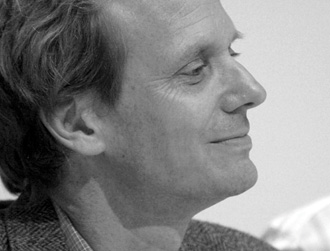 John Petersen ’88
John Petersen ’88Associate professor of environmental studies and biology,
director, Environmental Studies Program
(photo by Dale Preston ’83)
Today, we North Americans spend 90 percent of our lives in buildings. The built environment casts an enormous footprint on the ecological environment; activities that take place within buildings in the United States account for two-thirds of all electricity consumption, one-third of all U.S. greenhouse gas emissions, and 12 percent of all fresh water use. And yet there are no signs or indicators in buildings that would help us to understand or internalize this impact.
For the last 10 years I have been fortunate to work alongside an extraordinary group of Oberlin students, faculty, staff, and graduates evaluating various approaches to delivering real-time feedback as a mechanism for breaking down the disconnect between people and natural resources. Students and faculty in environmental studies, psychology, and computer science have been investigating what happens when people are made immediately aware of the resource flows necessary to support their activity in the built environment, and how the use of visual displays of resource usage might ultimately change behavior and promote conservation. In Oberlin College’s Lewis Center, in dormitories, and most recently within residences in town, we have been working to answer those questions.
Supported by an $812,000 grant from the Great Lakes Protection Fund, we have developed the concept of a "Bioregional Dashboard," a resource-use feedback system visible on public displays in the city and college as well as online. Narrated by animated characters such as the "Energy Squirrel" and "Wally the Walleye," the display tells the real-time story of total electricity and water use, as well as water flow and water quality in the nearby Plum Creek. The dashboard connects individuals with the ecological implications of choices made at home and in the workplace.
The goals we have set dovetail completely with the larger vision for the Oberlin Project: creating a community in which resource flows and environmental conditions are transparently displayed and become a natural part of the daily conversation, and in which the choices that we make are informed by an understanding that what we do is a reflection of who we are as individuals and as a community.
Ultimately, the Oberlin Project will be successful if we create models of thought and action that inspire others. Already, many of the ideas we have developed at Oberlin related to feedback display are now being deployed elsewhere by Lucid, an Oakland-based company founded by alumni who cut their teeth right here in Oberlin. This semester, students in a new course, Ecological Communication, are engaging with local schools, city officials, the library, and the chamber of commerce, as well as with other on-campus collaborators, to explore how local and bioregional feedback can be used to foster a community in which individuals have a deep sense of connection with each other and with the flows and cycles of the natural resources on which all life depends.
Students who participate in such a classroom experience, or who are exposed to the kind of resource monitoring they see at Oberlin, make excellent advocates, ambassadors, and entrepreneurs. These students become aware of their individual impact on the natural environment, but they also see an inverse version of that: how powerful their individual impact can be in bringing about positive change.
A Laboratory for Experiential and Meaningful Learning
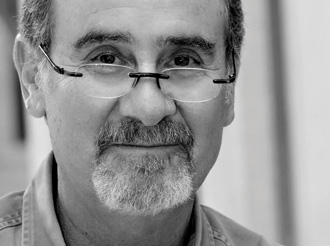 Steven S. Volk
Steven S. VolkProfessor of history, director,
Center for Teaching Innovation and Excellence
(photo by Tanya Rosen-Jones ’97)
When Ira Glass, the host of the phenomenally popular radio show and podcast This American Life, took the stage in Finney Chapel this past September, he reminded me of the large number of Oberlin graduates who populate the world of public radio. Let’s just say we own that world. Think Jad Abumrad ’95, Robert Krulwich ’69, Alex Blumberg ’89, Chana Joffe-Walt ’03, Zoe Chace ’04, Joe Richman ’87, etc. That got me thinking about the ways in which Oberlin fosters such creative innovators. We certainly attract a lot of highly original young souls to Oberlin, but what they experience here shapes, guides, and boosts that originality into a higher orbit, changing creative potential to creativity achievement. The challenge we face as a faculty and a community is to continue to cultivate creative capacity as the world of teaching and learning evolves rapidly around us.
Here’s a crash course on how teaching and learning have been changing. First take note of the phrase: "teaching and learning," not just teaching. As faculty, our focus can no longer rest exclusively on the transfer of content, but must be on the learning process itself. This shift has been brought about by two developments: a revolution in the cognitive sciences that allows us to know with greater accuracy how students learn, and a revolution in technology that allows and requires we make better use of space and time (where and when learning occurs), thereby taking full advantage of the fact that learning is continual and the enclosed classroom just one place among many where it is nurtured.
Considerable research has found that while the standard 50-minute physics or history lecture may capture the attention of that student who has already fallen head over heels in love with the discipline (and we certainly have many of those at Oberlin), it won’t attract those whose interest is more one of friendship than passion. Learning involves doing. The sciences have long understood that a chemistry lecture without the lab will not produce discerning chemists.
Experiential learning, real world learning, meaningful learning produce deeper understandings of fundamental concepts, a greater ability to challenge and displace ingrained beliefs, more acceptance of life’s ever-present ambiguities, considerably greater recall, and an enhanced ability to adapt learning from one context and apply it to others. These are skills that will be essential for all Oberlin’s graduates.
Enter the Oberlin Project.
Elsewhere in these pages, David Orr describes the critical goals and approaches of the Oberlin Project. At one level, the project addresses the question at the center of Oberlin’s purpose: What is education for? By helping students wrestle with, and work to creatively solve, some of humanity’s most pressing and complex systemic problems, it provides multiple answers to that question. At the level of learning, however, I would suggest that the Oberlin Project provides a unique opportunity to put into practice what the research on teaching and learning has discovered. The Oberlin Project, with its web of connections between college and town, urban and rural, economic, political, cultural, and much else, will be a laboratory within which the next generation of learning — experiential and meaningful — will take shape. By providing an opportunity for students to integrate their learning across disciplines and by linking curricular and extracurricular domains in the collaborative pursuit of answers to complex problems, the Oberlin Project will be one of many ways that Oberlin will answer the challenge of how to produce the next generation of original and creative thinkers who, having taken ownership over their own educations, can now own the future they will help build.
Friends of the Oberlin Project
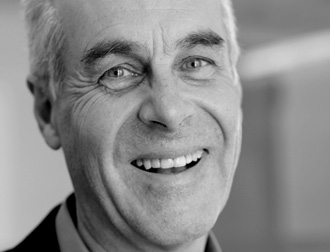 Anders Faijersson Ferguson ’75
Anders Faijersson Ferguson ’75Founding principal of Veris Wealth Partners and chair of
Friends of the Oberlin Project
(photo by Tanya Rosen-Jones '97)
For those members of the Oberlin community who seek to address the issue of climate change, the Oberlin Project offers a perfect opportunity for participation. In fact, participation by the broader community is deeply ingrained in the project, which touches all aspects of Oberlin — the town, the college, the alumni, the students, the faculty, the regional political leadership, and every academic discipline. And its success depends upon support across the spectrum, with contributions great and small, monetary and otherwise.
Over the last year, a group of alumni and national leaders in sustainability were captivated by the vision and power of the Oberlin Project. We witnessed a planning process that has already catalyzed millions of dollars of financial support and was developing a practical, whole-system approach to transform the city of Oberlin and the college into a replicable model of full spectrum sustainability. And we asked David Orr, "How can we help?"
So was born Friends of the Oberlin Project. After listening to Orr, we set a few simple but ambitious goals for 2011:
- To find the first 100 committed Founding Friends of the Oberlin Project, including community members, Oberlin alumni, and national leaders in the field of sustainability. We decided to begin by asking people already close to the project to close ranks and march together.
- To raise $1 million over five years from our Founding Friends —100 individuals willing to invest on average $2,000 for each of five years. We will use these funds to advance early-stage planning and development. These funds are key in leveraging additional support from other funders by demonstrating wide and growing support for the project.
- To plan the growth of the friends beyond 2012 to attract hundreds of supporters large and small to practically encourage the Oberlin Project and be a positive driver in its overall development.
What does it mean to be a Friend of the Oberlin Project? To begin, you are joining a group of like-minded people to provide financial support. You may also be tapped to help advise on specific matters of design and implementation or use your contacts to help build media awareness. Orr and other key leaders will provide updates on the Oberlin Project, and friends will have meetings in Oberlin and in cities across the country. Most importantly, you will have the satisfaction of making a meaningful and lasting difference to Oberlin and the world.
The good news is we are well on our way to reaching our goals, with more than 50 Founding Friends and nearly $600,000 raised. The even better news is that there are still plenty of opportunities to be involved, at all levels. All contributions, whether large or small, are meaningful to the project. That’s why we appreciate every single contribution made to the Oberlin Project.
When I was in Oberlin in October 2010 for the 10th anniversary celebration of the Lewis Center, I heard national leaders repeatedly call the Oberlin Project the most important full-spectrum sustainability initiative in America. I was impressed that small-town Oberlin, and the surrounding community, could be making such a difference. But then I looked around the room and acknowledged that deep and meaningful change takes a long time and a lot of preparation. I realized that Oberlin has been preparing for this challenge since its founding. I’m grateful to have the opportunity to play a role in this. I hope you’ll join me.
For more information, visit http://new.oberlin.edu/oberlinproject/fotop/
The Defining Context of Our World
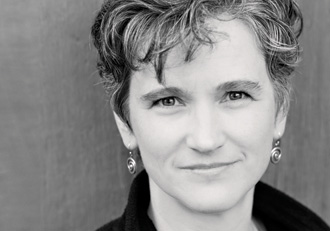 Cindy McPherson Frantz
Cindy McPherson FrantzAssociate professor of psychology
(photo by Tanya Rosen-Jones '97)
My mission as a professor has always been to give my students the tools they need to respond effectively and responsibly to the world they have inherited. As climate change increasingly becomes the defining context of their world, how do we prepare our students to not only survive, but also to thrive and lead?
My response to this question is grounded in my perspective as a social psychologist: The leaders of tomorrow need to understand psychological processes because both the problem and potential solutions to climate change have origins in human thought and behavior. On the other side of the equation, psychologists need to think about climate change because its effects will have far-reaching psychosocial impact on the people we study.
As a start I have incorporated examples related to climate change in my lectures, but this is only scratching the surface. In order to continue to grow, learn, and adapt independently, our students need to unite theory with application, master old knowledge while generating new ideas, and observe and create coordinated change in multiple systems. As a local, multisystem response to the threat of climate change, the Oberlin Project offers the perfect platform on which meaningful, cutting-edge education about psychological processes can occur.
The intellectual experiences I have begun to create around the Oberlin Project are varied. One student with an interest in journalism applied social psychological techniques to drafting op-ed pieces on energy to maximize the chances of changing attitude and behavior. Two research assistants studied the emerging field of community-based social marketing and developed a research plan that is currently being executed by a community organization. Other students have helped conduct research on how to best deliver real-time feedback to help building occupants reduce their resource consumption. I am teaching these students about the tools of my trade—psychological theory, scientific methods, the iterative process of research—in a context that means something to them, their community, and future generations.
As a result, there is no place I would rather be than right here, right now—on the campus of the liberal arts college known for leadership on moral issues, in the town poised to become a model post-carbon community, in the bell-weather state that swings elections, in the most powerful human society that has ever existed, educating the next generation of talented and creative leaders. What I teach matters.
An Integrated Response to the Global Challenges of Our Time
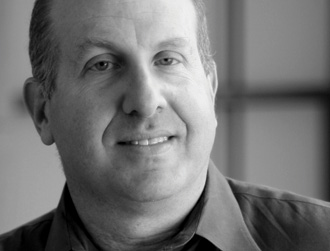 Marvin Krislov
Marvin Krislov
President, Oberlin College
(photo by John Seyfried)
The Oberlin Project was created to ensure that our college and our community will remain a leading force in 21st-century education while serving humankind. It will do so by applying our distinctive strengths in interdisciplinary teaching and learning to the global challenges of climate change, energy and resource usage, and environmental degradation.
Transforming Oberlin—college and town—into a global model of sustainable, economic development centered on education and the arts is in keeping with our educational mission and our historic legacy of creating positive social change.
The Oberlin Project will provide unique opportunities for our students and faculty to teach, to do research, and to become leaders in their fields. Like the Adam Joseph Lewis Center for Environmental Studies, the project will be a living laboratory that enriches our curriculum, elevates the college’s public profile, and attracts top students, as well as residents and businesses to our community. In the increasingly competitive world of higher education, the project will build on our leadership in environmental studies and help secure our standing as a preeminent liberal arts college and conservatory.
The community partnerships at the project’s core will provide learning, internship, and entrepreneurial opportunities for our students and our fellow citizens. Those opportunities are important because Oberlin College and the city of Oberlin are inextricably intertwined; neither can thrive without the other. In keeping with Oberlin’s great tradition of international engagement, the project also recognizes that our ideas and discoveries must apply across borders, cultures, and continents.
The Oberlin Project is a bold vision. But boldness has been part of Oberlin’s legacy since our founding in 1833. The project grew from Oberlin’s historic role as a driver of social progress and the commitment of the majority of our students, faculty, alumni, and staff to combating climate change. The decision to embark on the Oberlin Project was made after lengthy and inclusive deliberations with an array of local, regional, and national constituencies and stakeholders, as well as experts from governmental agencies and nongovernmental organizations. The common denominators that emerged in that process were that the scientific evidence of climate change is overwhelming, and that the time to act is now.
The Oberlin Project is our response to the global challenges of our times and to the challenges of building a bright future for Oberlin. We embarked on it bolstered by the knowledge that through the years the thinking, the discoveries, and the actions of Oberlin’s students, faculty, alumni, and local citizens have improved the lives of millions of people around the world. By reaffirming the purpose of an Oberlin education, and by building on the greatness of our college and our community, the Oberlin Project hopes to improve the lives of millions more through learning and labor.

Want to Respond?
Send us a letter-to-the-editor or leave a comment below. The comments section is to encourage lively discourse. Feel free to be spirited, but don't be abusive. The Oberlin Alumni Magazine reserves the right to delete posts it deems inappropriate.